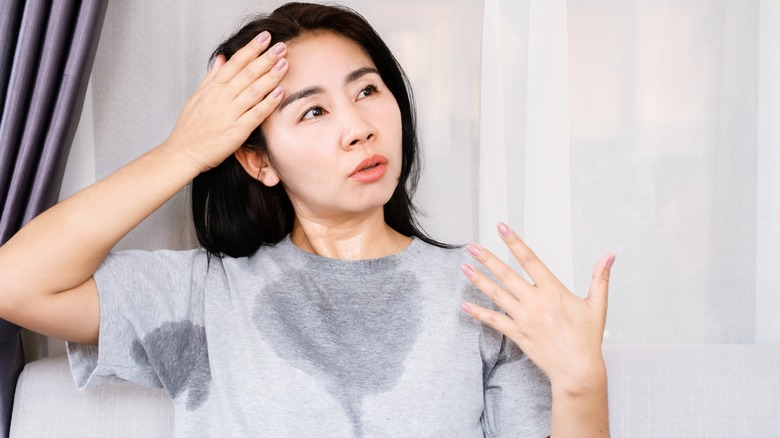Perimenopause Vs. Menopause: What's The Difference?
When many people hear the word menopause they most likely think of the loss of monthly periods and hot flashes. Yet there are so many things that everyone should know about this part of life.
Typically, menopause occurs in people assigned female at birth by the time they reach their middle years. According to the National Institutes of Health, menopause most often lands between ages 45 and 55. However, many people experience menopause younger. When menopause hits between 40 and 45, that's known as early onset menopause. It's also possible to reach menopause in your 30s and that's premature menopause. Going into menopause before the age of 30 is very rare, but it can happen.
Menopause is a part of life, and just like young people should learn about periods before they get them, all people should learn about menopause and what to expect long before they enter it. It helps to start with the many terms, and one thing that gets confusing is when people refer to menopause and perimenopause. Though some use the word interchangeably, there is a big difference between the two.
Perimenopause is not menopause
The prefix "peri" translates to "around" and perimenopause is quite literally the time around menopause. You haven't quite entered menopause just yet because you're still having periods, but your body is starting to undergo changes associated with menopause.
Perimenopause is common in your 40s and may also begin in your 30s. The first thing you may notice is a change in your periods because estrogen levels begin to fluctuate, as per Johns Hopkins Medicine. Periods may be further apart or even arrive sooner than expected because cycle lengths are changing. This can also affect your flow, as it may be heavier or lighter.
Since estrogen is unsteady, you may feel PMS symptoms when it peaks, but when it dips, you may feel typical menopausal symptoms such as hot flashes, trouble sleeping, headaches, changes in mood, and excessive and random sweating. This is all because your body is preparing for menopause. This transitional time of perimenopause can last for a few months but the average span is about four years, though it can last for a decade.
How menopause is different
Though you may experience all the same symptoms you had in perimenopause, menopause is a complete stop in your periods and the ability to conceive. Menopause is only diagnosed after you've had 12 consecutive months with no period at all (via Cleveland Clinic). Once you reach menopause, you go right into postmenopause.
In postmenopause, your hormone levels stay very low. You may still experience the symptoms with perimenopause but they may lessen or even gradually subside. If symptoms persist and affect your daily life, your doctor can help you come up with a plan designed to treat your specific symptoms and medical history. Some people choose to use natural methods to curb symptoms, while others may turn to hormonal therapy replacement.
Up until you reach full menopause, you can still get pregnant because even though periods and fertility are erratic, it is still a possibility. You should use birth control until officially diagnosed with menopause.


